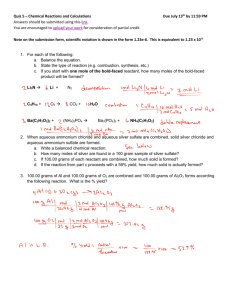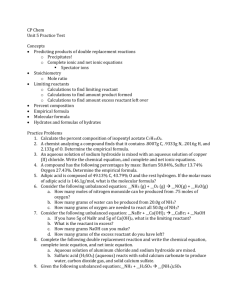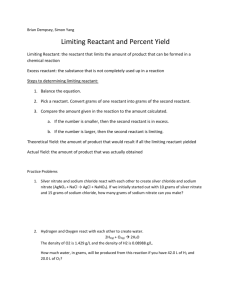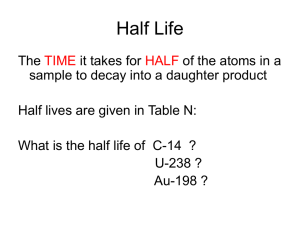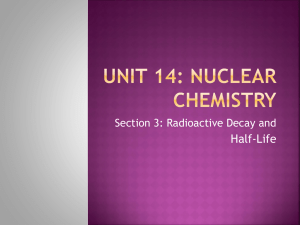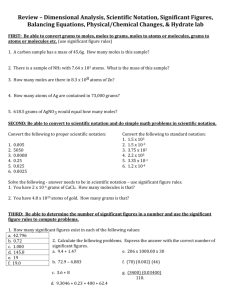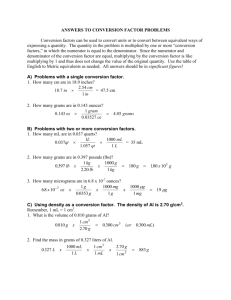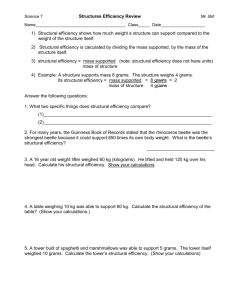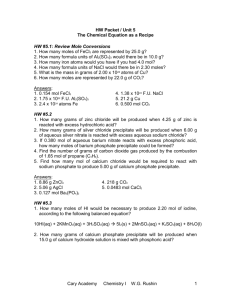Chemistry: Soap Article
advertisement
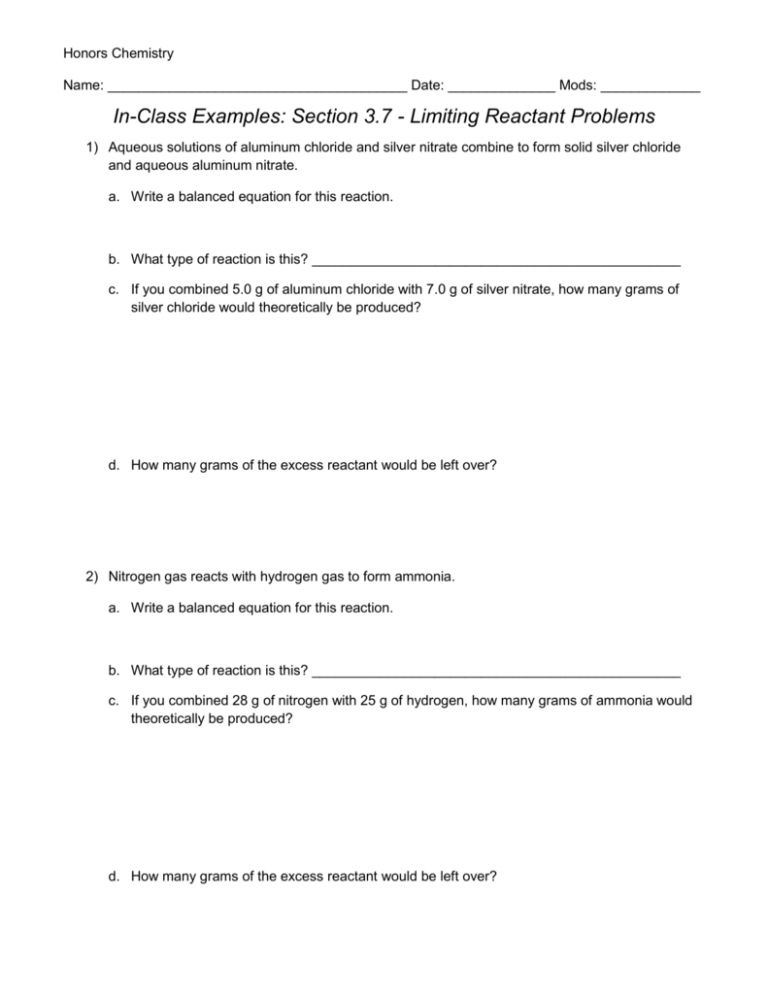
Honors Chemistry Name: _______________________________________ Date: ______________ Mods: _____________ In-Class Examples: Section 3.7 - Limiting Reactant Problems 1) Aqueous solutions of aluminum chloride and silver nitrate combine to form solid silver chloride and aqueous aluminum nitrate. a. Write a balanced equation for this reaction. b. What type of reaction is this? ________________________________________________ c. If you combined 5.0 g of aluminum chloride with 7.0 g of silver nitrate, how many grams of silver chloride would theoretically be produced? d. How many grams of the excess reactant would be left over? 2) Nitrogen gas reacts with hydrogen gas to form ammonia. a. Write a balanced equation for this reaction. b. What type of reaction is this? ________________________________________________ c. If you combined 28 g of nitrogen with 25 g of hydrogen, how many grams of ammonia would theoretically be produced? d. How many grams of the excess reactant would be left over? Section 3.7 - Limiting Reactant Problems 3) Copper combines with aqueous silver nitrate to form aqueous copper (II) nitrate and silver. a. Write a balanced equation for this reaction. b. If you combined 100 g of copper with 200 g of silver nitrate, how many grams of silver would theoretically be produced? c. How many grams of the excess reactant would be left over? 4) Gaseous carbon monoxide combines with hydrogen gas to produce liquid methanol, CH3OH. a. Write a balanced equation for this reaction. b. If you combined 152.5 g of carbon monoxide and 24.5 g of hydrogen, how many grams of methanol would theoretically be produced? c. How many grams of the excess reactant would be left over? Section 3.7 - Limiting Reactant Problems 5) Nitrogen gas and oxygen gas combine to form dinitrogen monoxide (laughing gas). a. Write a balanced equation for this reaction. b. If you combined 50 g of nitrogen gas with 75 g of oxygen gas, how many grams of laughing gas would theoretically be produced? c. How many grams of the excess reactant would be left over? 6) Gaseous dinitrogen tetroxide combines with gaseous dinitrogen tetrahydride to form nitrogen gas and water. a. Write a balanced equation for this reaction. b. If you combined 900 g of dinitrogen tetroxide and 400 g of dinitrogen tetrahydride, how many grams of water would theoretically be produced? c. How many grams of the excess reactant would be left over?
